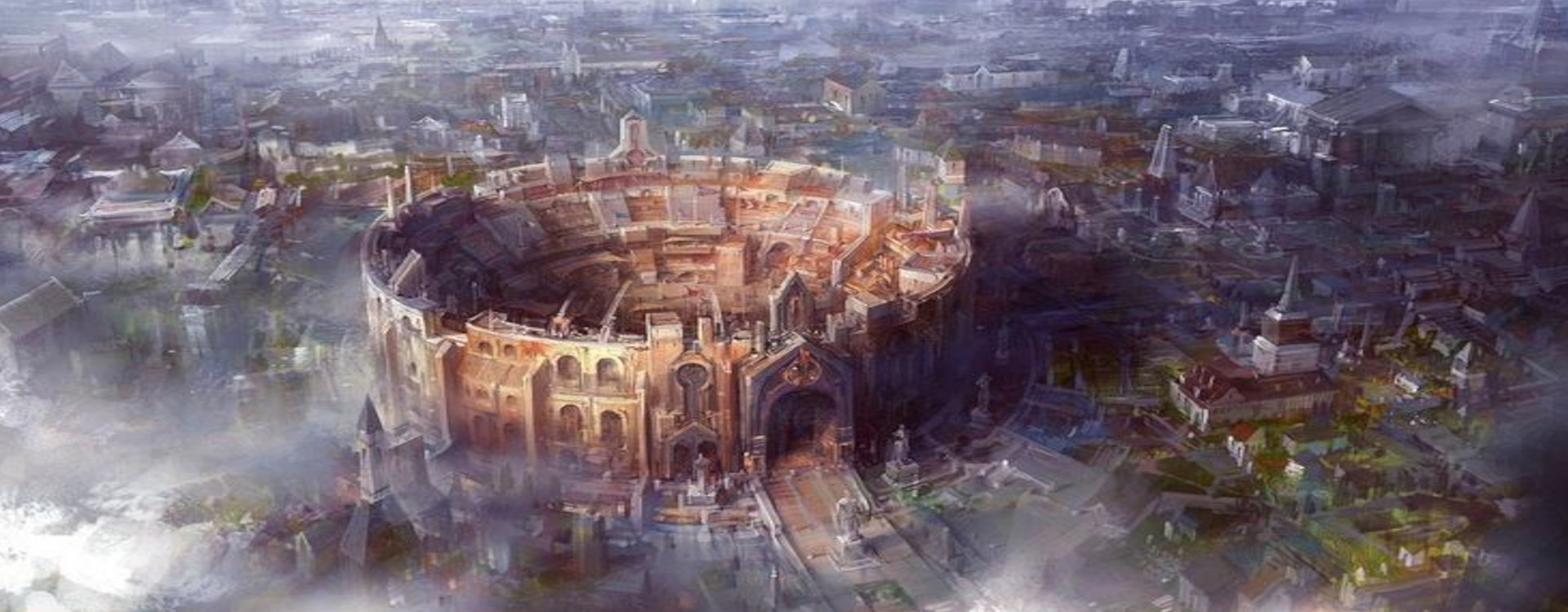Zanhor
Was once a lowly bandit encampment. Now, it is a stone metropolis notorious for its coliseum and the stark divides among its various demographics. A city of gritty warriors and hardy souls.
Zanhor is a sprawling, majestic city of contrasts, where its glittering palaces and bustling markets belie a history steeped in blood and rebellion. Once a rough-and-tumble fort built by a notorious bandit clan sometime in 6000 BDR, it has grown into a powerful kingdom known for its wealth, military might, and unyielding ambition. Zanhor sprawls across a wide plateau bordered by cliffs, its high position a reminder of its origins as a defensible fort. The city's architecture is an eclectic blend of its chaotic roots and its aspirations of refinement. Gilded towers and grand marble buildings rise alongside rougher, fortified structures of black stone, remnants of its earlier days. Streets snake unpredictably like a labyrinth that reflects its founding by bandits who valued secrecy and defense over order. Zanhor’s origins as a bandit fort are etched into its culture. The first settlers were an infamous clan of outlaws who used the plateau as a stronghold from which to raid nearby villages and caravans. Over time, the fort became a permanent settlement as opportunists, mercenaries, and traders gravitated toward the outlaws' wealth and protection. Eventually, the city outgrew its criminal beginnings. By 2500 BDR, bandit lords and clan leaders sought legitimacy, establishing trade alliances and a rudimentary government, but Zanhor retained its sharp edges. The city's wealth, built on plunder and trade, fueled the construction of its arena, temples, and palaces. It became a force to be reckoned with, waging wars on neighboring states to expand its territory and influence.The Dragonblood Coliseum built in 200 DR is the most iconic structure in Zanhor. This colossal circular amphitheater dominates the city's skyline. Built of jet-black stone and adorned with intricate carvings, the arena hosts grand spectacles of sports and gladiatorial combat, attracting fighters and spectators from across the realm. Sports and challenges of bravado and grit are deeply ingrained in the city's culture, with arena champions celebrated as heroes—or legends if they survive long enough, some, even earn their way into riches and lavish lifestyles.
Zanhor's staunch capital is also the locale of the first and only appearance of Obsidia, patron goddess of Astana's Catfolk populations and an eidolon of war and righteous rule, the figure who dethroned Zanhor's most infamous king, Torvek the Red. Torvek, a brutal and power-hungry ruler, is one of the darkest figures in Zanhor's history. He turned the city into a personal empire by rising to power through treachery and violence. Under his reign, wealth flowed to the elite, while the poor were subjected to crushing taxes and forced labor. His rule reached its nadir when a peaceful protest erupted in the streets as starving citizens demanded bread and fair treatment. Torvek’s soldiers slaughtered the protestors without mercy. This act of cruelty caught the attention of Obsidia, a lesser-known goddess of justice, stars, and liberation. Disguised as a mortal, she descended into the city to witness the atrocities firsthand. Outraged, she revealed her divine power, rallying the oppressed citizens and inspiring them to rise up against Torvek. In a climactic battle at the Grand Citadel, Obsidia herself struck Torvek's guards down with a blade of obsidian fire before dissappearring along with the king, never to be seen again, shattering his iron grip on the city.
Today, Zanhor thrives as a powerful and ambitious city, but it is far from free of its darker impulses. The city remains notorious for its cutthroat politics, extravagant displays of wealth, and enduring love of spectacle. The Dragonblood Arena, once used as a means of punishing criminals, has become a celebrated stage where warriors fight for fame, fortune, and survival. While many worship Obsidia and celebrate her liberation of the city, others view her intervention as a double-edged sword. The wealth gap remains stark, and the city’s past wars of conquest often overshadow its more noble aspirations. Still, the story of Obsidia's rebellion inspires hope among the downtrodden, and her temple is a sanctuary for those seeking justice or redemption. New advocates for equality and sancutary from oppression have also recently appearred amidst this city, namely within one of it's neighborhoods that is essentially one large ghetto known as Moonstead, where the The Church of Nightfall has grown in popularity among the poor and oppressed.

